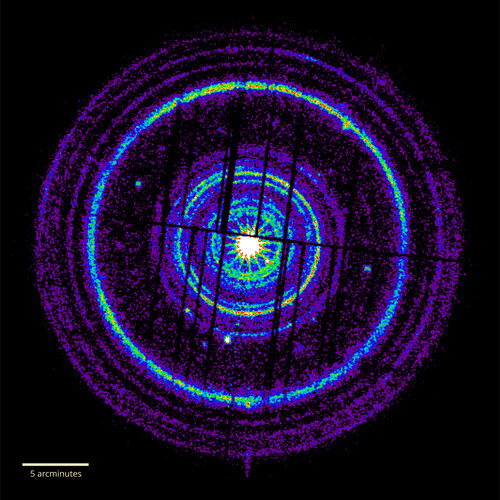
A number of other ESA spacecraft, XMM-Newton, Solar Orbiter, BepiColombo, Gaia, and SOHO, also detected the GRB or its effects on our galaxy. The event was so bright that even today the residual radiation, known as the afterglow, is still visible and will remain so for a long time yet. “We will see the afterglow of this event for years to come,” says Volodymyr Savchenko, University of Geneva, Switzerland, who is currently analysing the Integral data.
This large amount of data from entirely different instruments is now being brought together to understand how the original explosion took place, and how the radiation has interacted with other matter on its journey through space.
One area that has already yielded scientific results is from the way the X-rays have illuminated dust clouds in our galaxy. The radiation travelled through intergalactic space for around two billion years before entering our galaxy. It then encountered the first dust cloud around 60 000 years ago, and the last one about 1000 years ago.
Each time the X-rays encountered a dust cloud, it scattered some of the radiation, creating concentric rings that appeared to expand outwards. ESA’s XMM-Newton observed these rings for several days after the GRB. The closest clouds produced the largest rings simply because they appear bigger by perspective.



